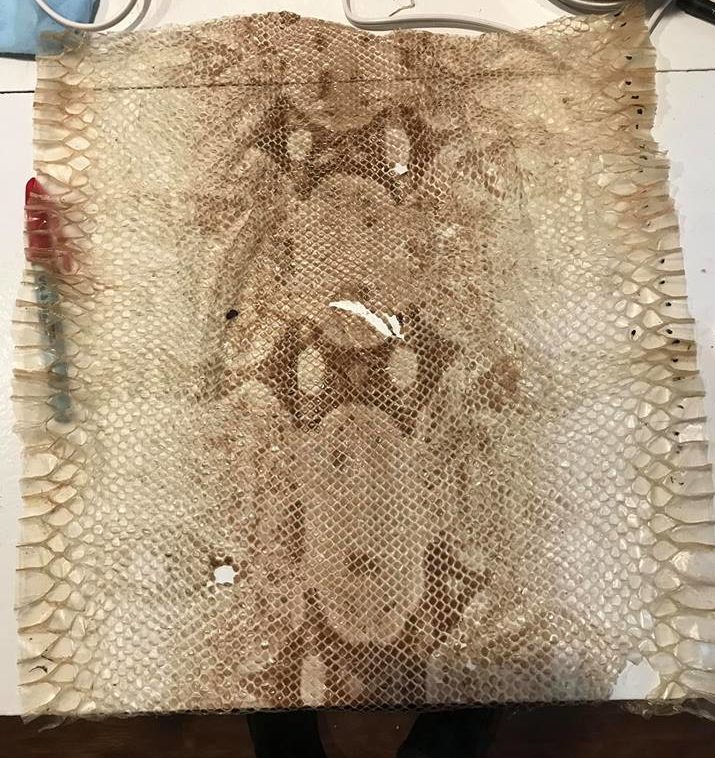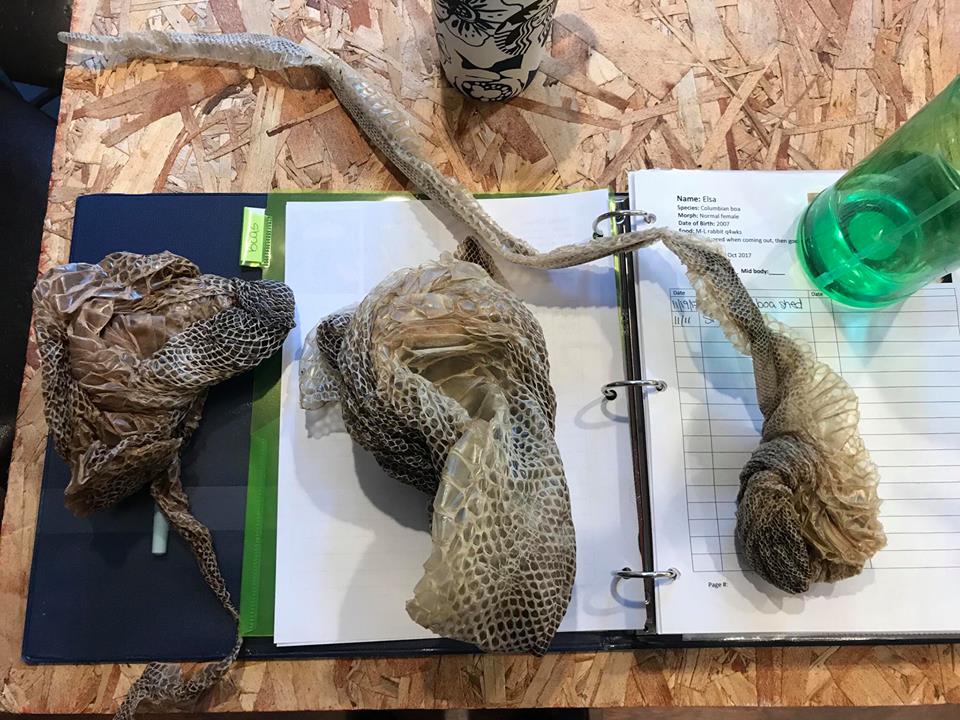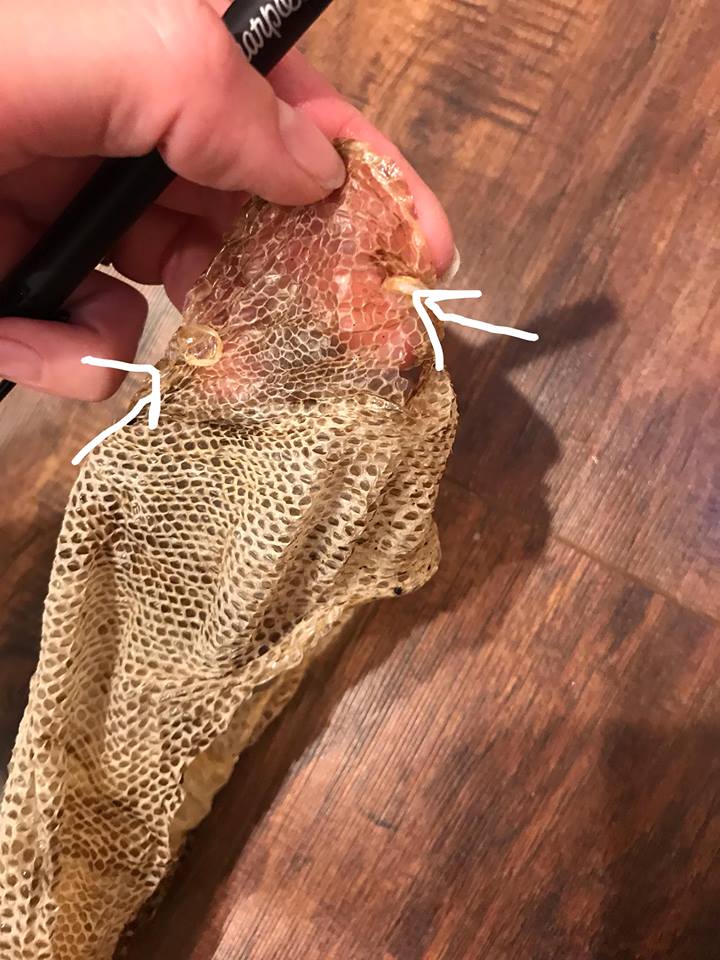
This is a great technique for identifying different localities or subspecies of snakes. Many groups will have an average range that their counts will fall into. This can be used to help you figure out what type of boa you have, or which type of blood python, or it can be used as a permanent signature for future identification of individuals.
Follow along in the steps below to learn how to do this:
The scale counts of each individual is permanent. They do not grow MORE scales as they age and gain in size. Rather each scale just grows larger.


- Start with a complete shed that has no tears. This requires your husbandry to be spot on. In the picture above you see complete sheds from 3 different boas. This is what they look right after the snake finishes removing it. These need to be flattened and prepped. By soaking the shed in some warm water if will soften and you will be able to unroll it. Once unrolled you can stretch it out to dry. Try to place it in a way that keeps it from sticking to itself in any folds as it dries.
- Once it is dry again you can get the Ventral Scale count. To do this you count each of the wide ventral belly scales starting at the chin and counting all the way down to the vent. Do not count the ventral TAIL scales. These two pictures below show the head section and the tail section. In order to get a true ventral scale count your shed needs to include the whole face. Here you can see the lens that covered the eyes which is an easy was to know you have the whole face intact.

face 
vent

3. I prefer to use a sharpy pen to mark the ventral scales as I go to keep me from losing count. Most snakes will have a ventral count in the 200’s. Stretching the shed out on a long counter, or on the floor will make this process easier.
4. Next you will work on getting the mid-body count. Fold the shed in half and cut a section out from the center of the shed. Cut that piece down the center of the ventral belly scales and open in up flat.
to be continued . . .



